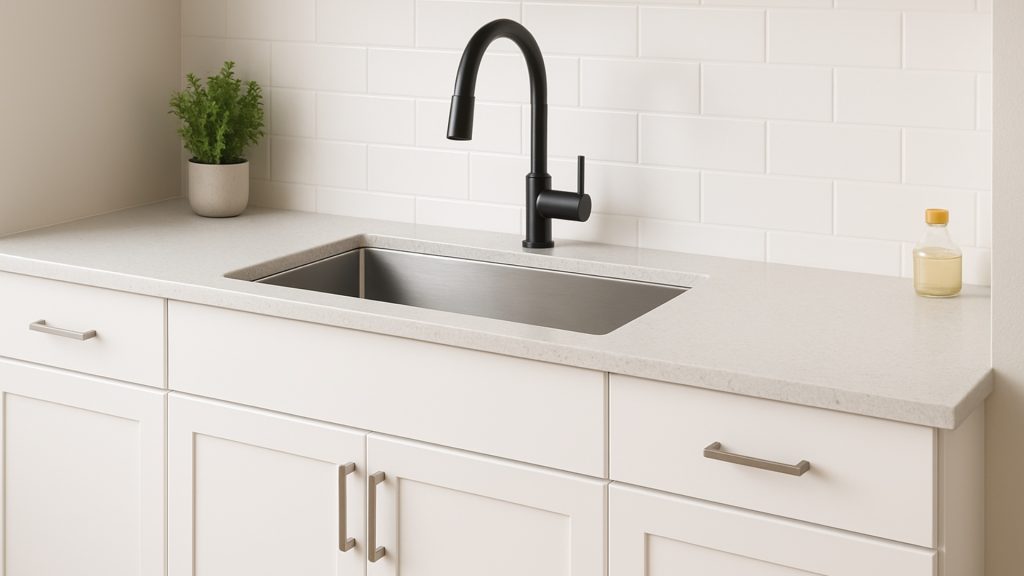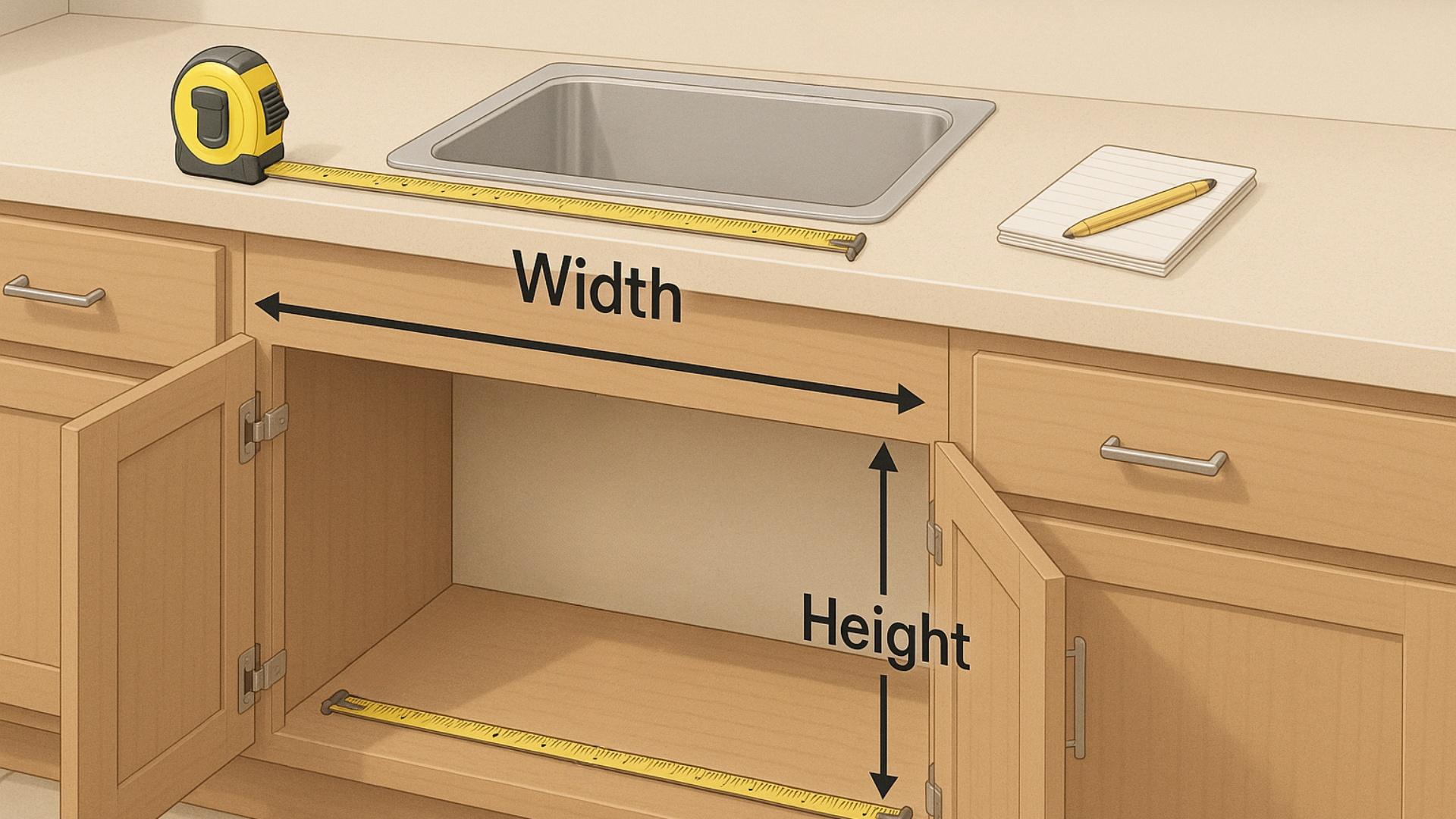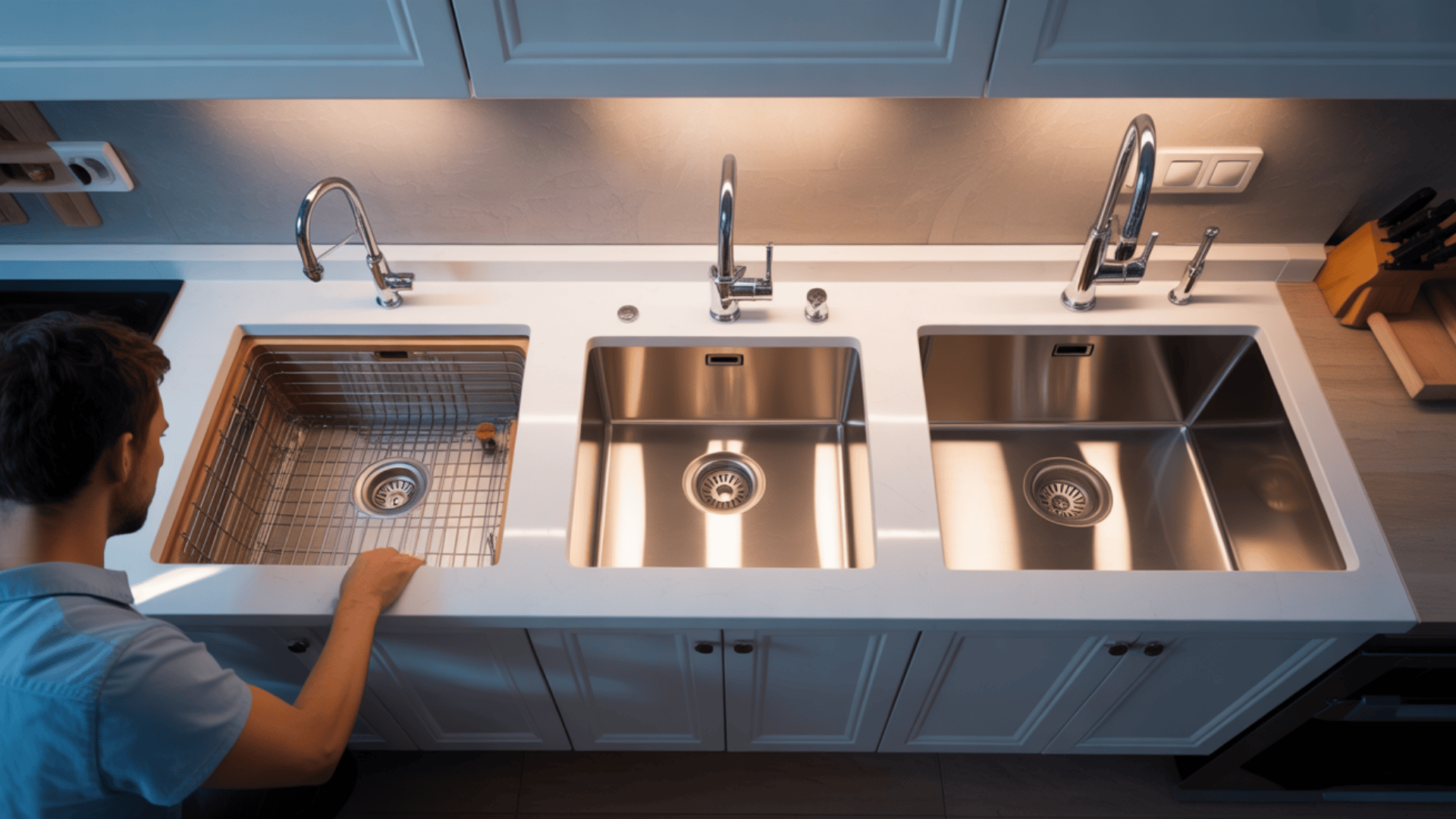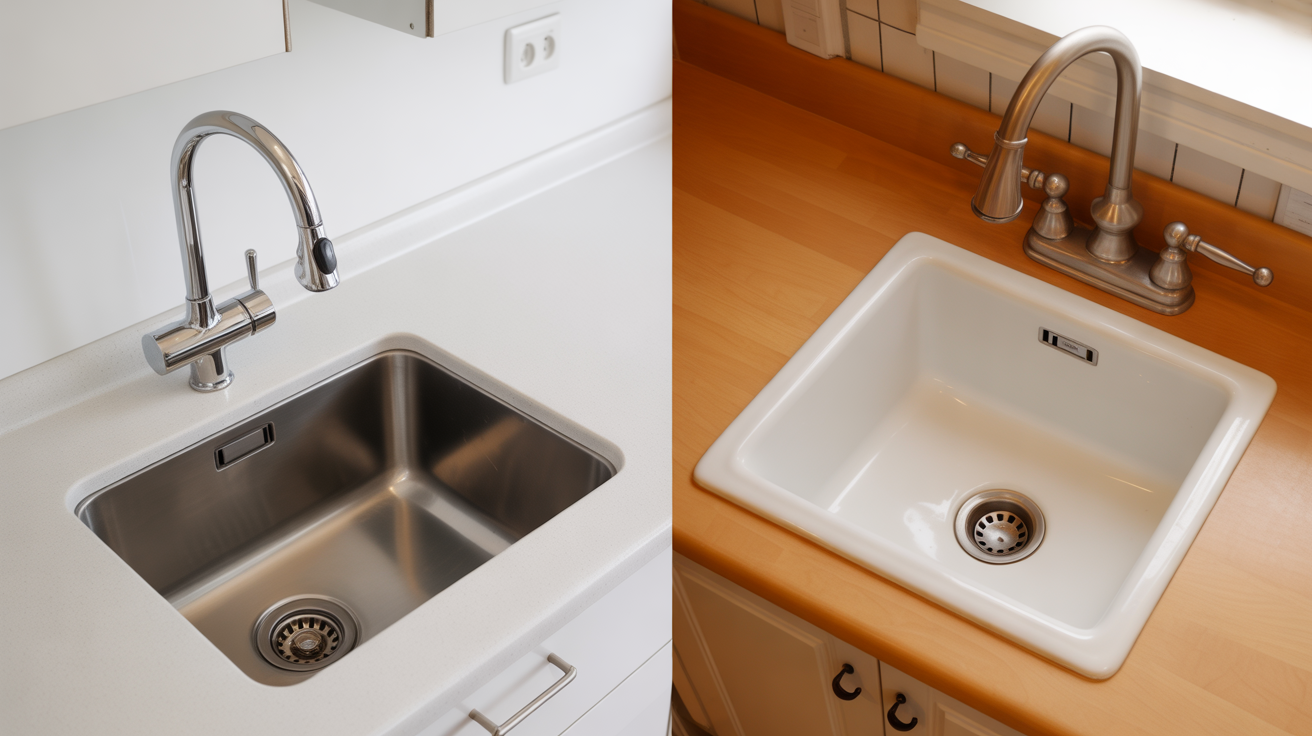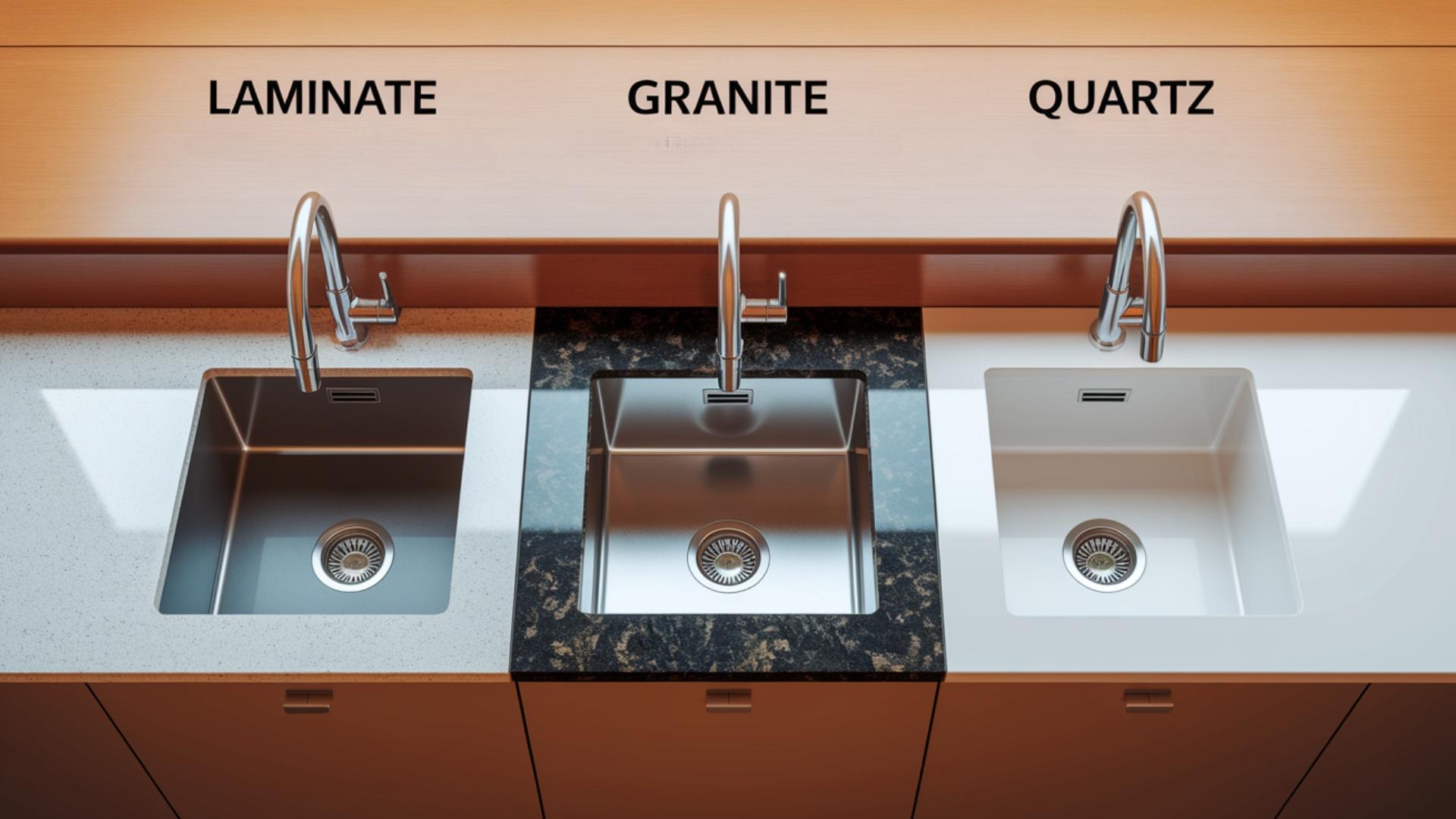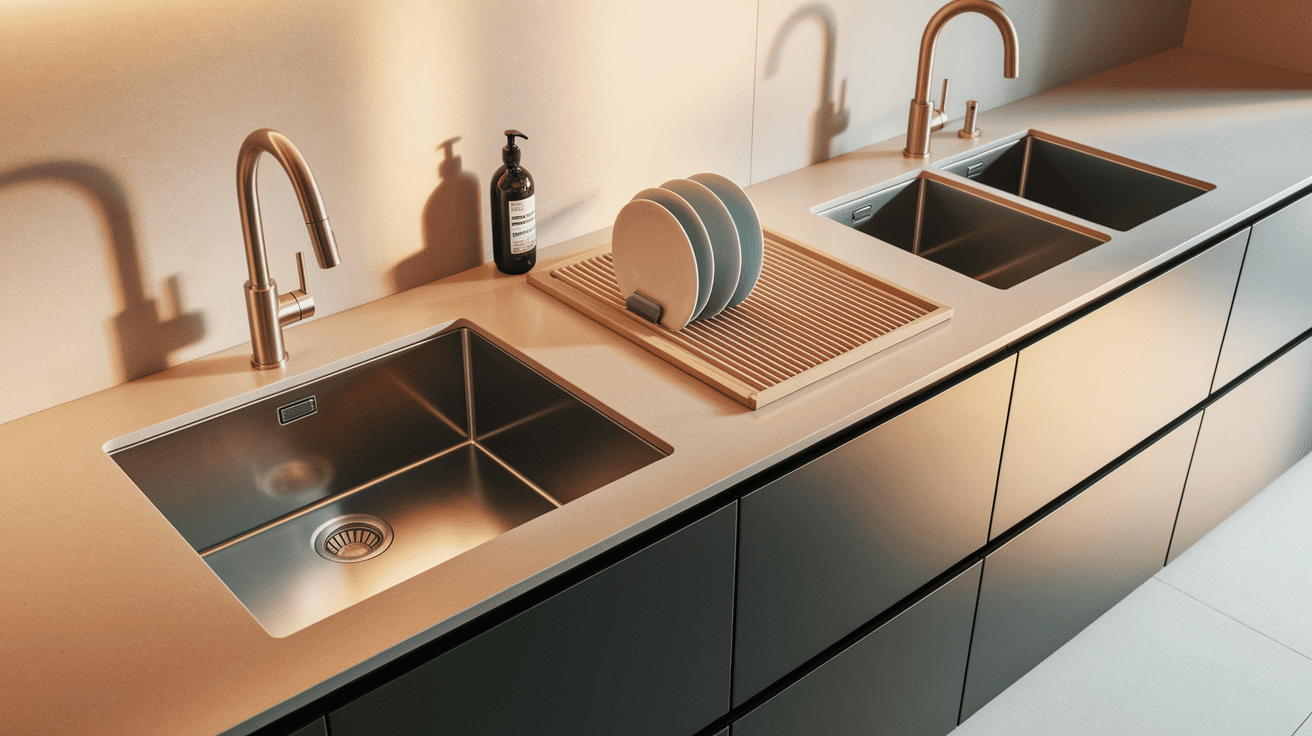Wondering what size sink would work best in a 36-inch kitchen cabinet for your renovation?
You’re not alone!
Finding the perfect sink-to-cabinet ratio can feel overwhelming with so many options available.
A 36-inch cabinet offers versatile possibilities for sink sizes, but selecting the correct one is crucial for both functionality and aesthetics.
The wrong size can lead to installation headaches, limited workspace, or even structural problems.
We’ll show you everything you need to know about selecting the ideal sink dimensions for your 36-inch cabinet.
From measuring techniques to material considerations, the content covers all aspects of proper sink sizing.
Your kitchen is the heart of your home, and the sink is one of its most frequently used features.
Getting this decision right will enhance your daily kitchen experience for years to come.
Understanding Sink and Cabinet Sizing
When shopping for a kitchen sink, understanding measurements is crucial.
A “36-inch cabinet” refers to the exterior width of the cabinet from one outside edge to the other, not the interior space available for your sink.
Most standard base cabinets are 24 inches deep and 34.5 inches tall, but the width varies according to your kitchen layout.
Sink measurements are based on three key dimensions: width (the left-to-right measurement), depth (the front-to-back measurement), and bowl depth (the depth of the sink basin from top to bottom).
When choosing a sink for a 36-inch cabinet, you’ll typically want a sink that’s approximately 33 inches wide, allowing for proper installation with about 1.5 inches of clearance on each side.
Undermount sinks need more clearance than drop-in models, and farmhouse sinks have unique installation requirements affecting cabinet structure.
How to Measure for Your Sink Properly?
Installing a new sink?
Getting the measurements right is crucial, especially for a 36-inch cabinet.
Follow these 5 simple steps to ensure a perfect fit.
Tools You’ll Need
Proper measurement is essential for a perfect sink fit in your 36-inch cabinet.
Having the right tools ensures accuracy and prevents costly installation mistakes or returns.
- Measuring tape (preferably metal for accuracy)
- Pencil and notepad
- Straightedge or ruler
- Level (optional, for confirming even surfaces)
- Cabinet specs (if available)
These simple tools will help you get precise measurements for your sink installation project.
Double-check each measurement at least twice to avoid errors, as even small miscalculations can lead to problems during installation.
Easy Steps To Follow
Following a systematic approach makes measuring easier and more reliable for your sink installation.
Take your time with each step for accuracy, and don’t hesitate to repeat measurements if you have any doubts.
- Measure the Cabinet’s Interior Width: Ensure you have at least 3 inches of clearance (1.5″ on each side); a 36″ cabinet typically fits up to a 33″ sink.
- Check the Cabinet Depth (Front to Back): Most are 24″, but confirm available space for the sink and countertop overhangs.
- Measure the Vertical Clearance Inside the Cabinet: To ensure sufficient room for sink depth, plumbing, and a garbage disposal, if needed.
- Account for Countertop Overhang: Standard 1.5″ overhangs reduce usable width from the top; important for drop-in or undermount sink placement.
- Check Surrounding Clearances: Ensure there is sufficient room behind for faucets and that adjacent drawers or appliances won’t interfere.
Following these steps will ensure your sink fits perfectly in your 36-inch cabinet without unexpected complications.
Measure twice, cut once, for best results. Always consult with a professional if you’re uncertain about any measurements or specifications.
Recommended Sink Size for a 36-Inch Cabinet
When selecting a sink for your 36-inch cabinet, follow the general rule that your maximum sink width should be 33 inches.
This size limitation exists because you need to leave approximately 1.5 to 2 inches of clearance on each side of the sink.
This extra space isn’t wasted, it’s essential for proper mounting hardware, support structures, and plumbing connections.
Without adequate clearance, installation becomes difficult or impossible, and your sink won’t be properly supported.
Several sink width options work well with 36-inch cabinets.
Sinks between 27 and 30 inches wide provide a safe, comfortable fit with extra clearance for easier installation.
Sinks measuring 31 to 32 inches are still large but manageable, giving you ample washing space while maintaining adequate clearance.
A 33-inch sink is the maximum size that will fit, requiring precise installation and leaving minimal clearance on each side.
Can a 36-Inch Cabinet Fit a 33-Inch Sink?
Yes, a 36-inch cabinet can fit a 33-inch sink.
This combination pushes the limits of proper installation.
You’ll have only 1.5 inches of clearance on each side.
Professional installation is highly recommended for this size combination.
The sink will need sturdy reinforcement underneath.
This is especially true for heavier materials, such as cast iron or fireclay.
The cabinet must be in perfect condition.
It needs straight, square corners for this maximum-size installation to work correctly.
While possible, this tight fit may complicate future repairs.
There’s very little wiggle room for adjustments when working with such precise measurements.
Factors to Consider Beyond Width
When selecting a sink for your 36-inch cabinet, width is just the starting point.
Several other factors affect how your sink will fit and function in your space.
Consider these important elements before making your final decision.
1. Undermount vs. Drop-in Sink
Undermount sinks attach to the underside of your countertop, creating an effortless look, but they require more interior cabinet space than drop-in models.
They need precise cutouts and sturdy support structures beneath the counter.
The sink rim doesn’t rest directly on the counter, so you’ll need slightly more clearance inside your cabinet to accommodate the full sink width, plus the mounting hardware.
2. Countertop Material
Your countertop material has a significant impact on sink installation.
Heavier materials, such as granite or quartz, require robust support structures beneath both the counter and the sink.
These materials also need professional cutting for precise sink openings.
Lighter materials, such as laminate, offer more flexibility but may limit your sink options, particularly for undermount styles, which work best with solid-surface countertops.
3. Bowl Configuration
Single-bowl sinks provide maximum washing space and work well for washing large items.
In a 36-inch cabinet, you can fit a generously sized single bowl up to 33 inches wide.
Double bowl configurations divide the available width, resulting in narrower individual bowls.
Consider how you’ll use your sink—cooking habits, dishwashing preferences, and typical cleaning items all influence which configuration works best.
4. Faucet and Accessory Placement
Remember to leave adequate space behind your sink for faucets, soap dispensers, and other accessories.
Standard countertops provide about 4 inches of flat space behind the sink for these items.
Larger faucets with pull-down sprayers need more clearance.
Accessories like filtered water dispensers or garbage disposal air switches require additional holes, so plan your sink size to ensure sufficient mounting space remains.
Mistakes to Avoid When Choosing a Sink for a 36-Inch Cabinet
Selecting the right sink for your 36-inch cabinet requires careful planning to avoid common pitfalls.
Many homeowners make these mistakes during their kitchen renovations.
Here are the key errors to avoid:
- Select a sink wider than 33 inches.
- Measuring only the cabinet’s exterior dimensions.
- Forgetting to check the vertical space for plumbing.
- Choosing a sink too heavy for your cabinet.
- Ignoring how sink style affects installation requirements.
- Overlooking space needed for faucets and accessories.
- Forgetting that the countertop overhang reduces available space.
By avoiding these mistakes and taking accurate measurements, you’ll ensure a successful installation with a sink that fits perfectly and functions well in your kitchen space.
Summing It Up
Selecting the right size sink for a 36-inch cabinet doesn’t have to be complicated.
Remember that while a 33-inch sink is typically the maximum width, your specific needs should guide your decision.
You choose a spacious single bowl or a practical double-bowl configuration, proper measurements and installation are key to success.
Consider all factors, mounting style, material weight, and accessory placement, to ensure your sink serves you well for years to come.
You’re now equipped to make an informed decision about which sink size for a 36-inch cabinet will work best in your kitchen.
Happy renovating, and enjoy the improved functionality and beauty that your perfectly-sized new sink will bring to your home!

